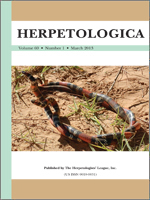We describe a pentaploid froglet (LLLRR; three Pelophylax lessonae and two Pelophylax ridibundus genomes) that has never been reported before within the Water Frog (Pelophylax esculentus) hybrid complexes. The pentaploid specimen was found among almost all triploid siblings obtained from a diploid female P. esculentus (LR) crossed with a diploid male P. lessonae (LL). We confirmed ploidy levels of the parents and the offspring by karyotyping, microsatellite analysis (18 loci), and measurements of DNA content and erythrocyte size. Microsatellite analysis indicated that the pentaploid originated from a tetraploid ovum (LLRR) fertilized by a haploid sperm (L). Surprisingly, the erythrocytes of the pentaploid were not proportionally larger than in triploids, despite a higher DNA content. Only 6.7% of the erythrocytes were distinctly large, whereas the others varied strongly in shape and size; besides typical ovoid mature erythrocytes there were small, tear-shaped, or enucleated ones. We discuss the possibility of loss of some cytoplasm by large erythrocytes as a result of mechanical damages during circulation through the narrow vessels; when the erythrocytes achieve a relatively higher surface-to-volume ratio, they may function more effectively in a proper gas exchange.
How to translate text using browser tools
1 March 2013
Genetic and Cytogenetic Characteristics of Pentaploidy in Water Frogs
Adam Hermaniuk,
Nicolas B. M. Pruvost,
Piotr Kierzkowski,
Maria Ogielska
ACCESS THE FULL ARTICLE

Herpetologica
Vol. 69 • No. 1
March 2013
Vol. 69 • No. 1
March 2013
cell size
Enucleated erythrocytes
genome size
hybridogenesis
microsatellites
Pelophylax esculentus
polyploidy




